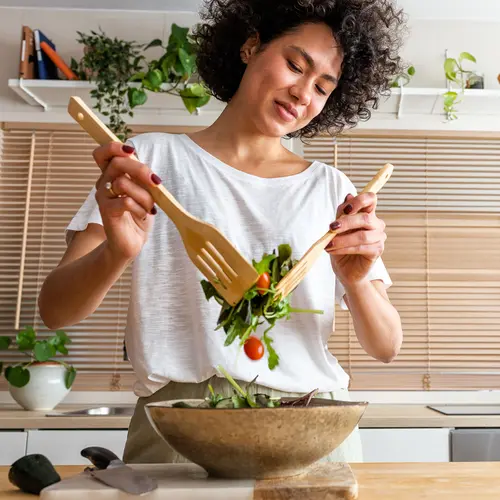Lentils are one of the world's oldest health foods. Growers first raised these beans in the Middle East in 8,000 B.C, and they've worked their way west since then. Along the way, Greeks considered the bean a poor man's food while Egyptians often regarded it as royal fare.
The lentil came to the Americas in the early 16th century. During World War II, people began to see it as a low-cost, high-protein meat substitute.
The lens-shaped bean comes in several varieties. The most common types are brown, green, and red. Dietitians like the gluten-free food because it's got lots of nutrition. Cooks like how its subtle flavor makes it the perfect canvas for other ingredients and seasonings.
Nutrients per Serving
Experts consider green lentils healthier than the other varieties. One-half cup of cooked lentils has:
Other vitamins and minerals include:
Health Benefits
When stacked up against other beans, lentils are No. 2 in protein (soybeans take top honors). When combined with a whole grain, like brown rice, they can give you the same quality of protein as meat. But when you eat lentils instead of red or processed meat, you make a healthier choice for your heart.
Protein is a building block of bones, muscles, and skin. It can also curb your appetite because it keeps you feeling full longer than other nutrients do.
Fiber fills you up, too. Lentils have plenty of it. A single serving meets 32% of the fiber you need each day. It can lower cholesterol and protect against diabetes and colon cancer. A daily dose of fiber pushes waste through your digestive system and prevents constipation, too.
The potassium, folate, and iron in lentils also provide lots of benefits. Potassium counters the bad effects of salt and lowers blood pressure. Folate protects your heart and supports your body in forming red blood cells. If you're pregnant, folate is important for your baby's development. Iron helps ward off fatigue.
Are There Any Risks?
For all its benefits, the fiber in lentils is hard to break down. That's why it can cause gas and cramping if you eat too much of it.
Preparation
Unlike most dry beans, you don't have to soak lentils before you cook them. Just rinse them. But first, pick through them and throw away any that look damaged. Red lentils cook the fastest, usually in 5 minutes. The other varieties typically need 20 minutes.
You can serve lentils hot with rice or cold in a salad. If you prefer not to cook, you can find canned lentils at your local grocery store.

